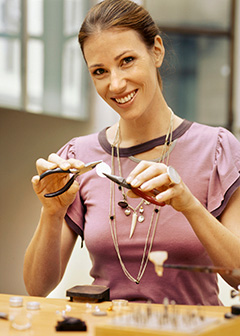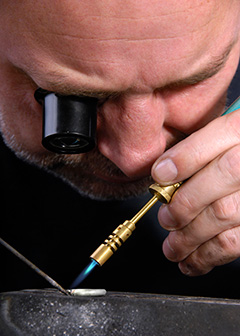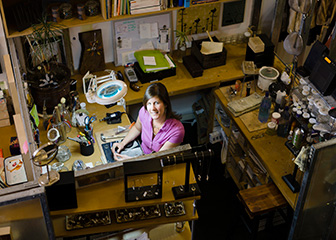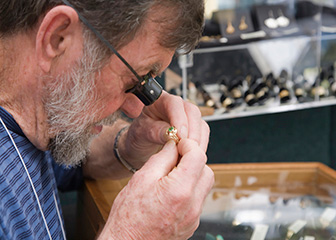Summary

| Quick Facts: Jewelers and Precious Stone and Metal Workers | |
|---|---|
|
$35,170 per year
$16.91 per hour |
|
| High school diploma or equivalent | |
| None | |
| Long-term on-the-job training | |
| 39,200 | |
| -5% (Decline moderately) | |
| -2,000 | |
What Jewelers and Precious Stone and Metal Workers Do
Jewelers and precious stone and metal workers design, manufacture, and sell jewelry. They also adjust, repair, and appraise gems and jewelry.
Work Environment
Jewelers and precious stone and metal workers spend a lot of their time at a workbench, using different tools and chemicals. Almost half are self-employed, and many work from home and sell their products at trade and craft shows on weekends. Others are employed in jewelry stores, repair shops, and manufacturing plants.
How to Become a Jeweler or Precious Stone and Metal Worker
Many jewelers and precious stone and metal workers learn their skills through apprenticeships and on-the-job training, but a growing number attend trade schools.
Pay
The median annual wage of jewelers and precious stone and metal workers was $35,170 in May 2010.
Job Outlook
Employment of jewelers and precious stone and metal workers is expected to decline 5 percent from 2010 to 2020. Moderate competition is expected for skilled positions, and strong competition is expected for lower skilled manufacturing jobs.
Similar Occupations
Compare the job duties, education, job growth, and pay of jewelers and precious stone and metal workers with similar occupations.
O*NET
O*NET provides comprehensive information on key characteristics of workers and occupations.
Contacts for More Information
Learn more about jewelers and precious stone and metal workers by contacting these additional resources.










